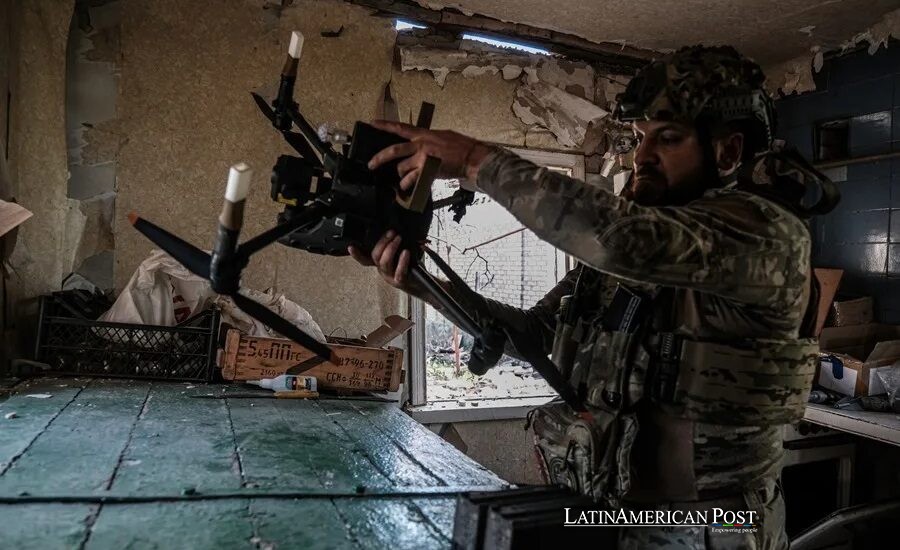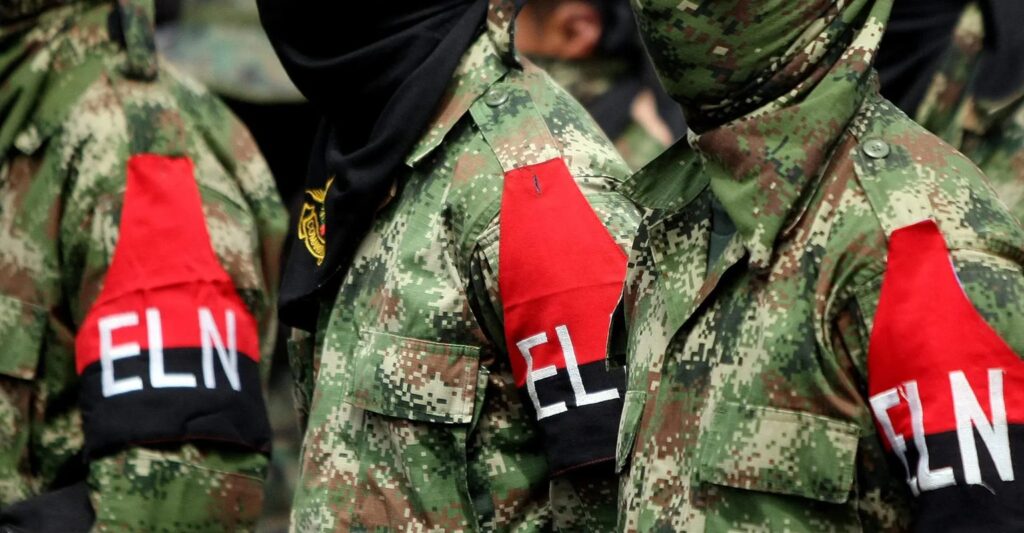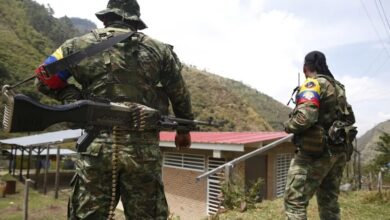Colombia’s War Now Falls from the Sky: Drones, Fear, and a Buzz That Kills

In the rural highlands of Cauca and the tangled jungle of Catatumbo, war has found a new shape: small, quiet, and deadly. It floats. It buzzes. And it drops bombs.
The battlefield is now above the rooftops
On a flickering surveillance monitor, two men watch as a speck in the sky releases its payload—homemade, crude, and lethal. Below, civilians scatter before the explosion blooms. This isn’t footage from Ukraine or Gaza. This is Colombia.
Armed groups have discovered drones.
What began as a trickle of reports has become a steady stream of terror. Fighters from the National Liberation Army (ELN) and dissident FARC factions are now weaponizing off-the-shelf quadcopters—drones that anyone can buy, modify, and fly. NBC News verified 17 separate videos showing drones used to drop explosives on Colombian towns, security posts, and civilians.
One of the most haunting attacks came in 2023. In the town of El Plateado, Cauca, a drone released a bomb over a soccer field, killing a 10-year-old boy named Dylan and wounding twelve others. “Every day they try to attack,” Brig. Gen. Federico Mejía, who commands Colombia’s forces in Cauca, told NBC News.
The trend is accelerating. Colombia recorded 119 drone-related attacks in 2024. By August of this year, that number had already jumped to 180.
The hum that signals fear
In Catatumbo, they’ve given it a name: zumbido. The buzz.
“You don’t hear it until it’s too late,” said Luis Fernando Niño López, the government’s peace commissioner in Norte de Santander. These drones fly low, fast, and nearly silent. They evade roadblocks, trenches, and rooftops. They float above rural homes, then drop death through the sky.
“We’re seeing huge fear created now in Catatumbo whenever there’s the sound of a drone going around,” said Juanita Goebertus of Human Rights Watch. “It’s become the symbol of terror.”
The bombs are vicious. General Mejía described how militants load plastic bottles with nails, chainsaw teeth, and scrap metal—cheap shrapnel that turns every drop into a low-flying claymore. Elizabeth Dickinson of the International Crisis Group told NBC News that while many attacks target police or rival factions, the weapons are “by definition, indiscriminate.”
Farmers and families now listen for the buzz before stepping outside.
José del Carmen “Carmito” Abril knows that fear intimately. The 55-year-old farmer and social leader fled his village in January after ELN fighters accused him of organizing resistance. Now in hiding, he said a woman and her 12-year-old daughter were killed by a drone-dropped grenade in Tibú in May. “There is a fear of drones,” he said. “Farmers are military targets for the ELN.”
More than 73,000 people have fled Norte de Santander this year alone—the highest displacement in the region in nearly 30 years.
A new war taught by TikTok
The war’s new weapons are simple, seductive—and increasingly in the hands of teenagers.
“My son is 13 and manages a drone perfectly,” Gen. Mejía said. That’s no accident. Armed groups are deliberately recruiting younger and younger fighters, many of whom learn their tactics on YouTube, TikTok, and WhatsApp. Child recruitment has surged more than 1,000% since 2021, Dickinson told NBC News.
In 2023, a 16-year-old was arrested for flying a drone that bombed a police station.
The guerrilla playbook has gone digital.
“These groups are watching Ukraine,” Dickinson said. “They see how drones are used there and think, ‘We can do that.’ And once one faction uses drones, it spreads like wildfire.”
Drones don’t need roads. They don’t need numbers. They let small groups strike far beyond their footprint—into barracks, towns, and civilian homes. The FARC peace deal of 2016 shrank the battlefield. Drones are expanding again.
The U.S. debates aid while Colombia scrambles to catch up
Colombia is racing to adapt. The Defense Ministry has proposed new laws to classify drone attacks on civilians as terrorism. In hotspots like Cauca, anti-drone systems now detect and jam hostile UAVs. Mejía said those efforts cut drone attacks by 80% in his zone.
But coverage is limited. Police still resort to shooting drones out of the sky—often too late, often too risky. “They’re very hard to shoot down,” said Henry Ziemer, a fellow at the Center for Strategic and International Studies. “If you’re a civilian living in rural Colombia… you really have no recourse,” he told NBC News.
Worse, Colombia faces the risk of losing U.S. security assistance. Hundreds of millions of dollars in equipment, training, and intelligence could vanish if the White House decertifies Colombia’s anti-drug performance next month.
Retired Gen. Alberto José Mejía Ferrero warned NBC News that such a move would “be very bad for our strategy… and the very strong relationship our armed forces have had with the U.S. for decades.”
And Colombia isn’t alone. Cartels in Mexico have used drones to bomb police. In Ecuador, a drone helped blast open a prison roof during a mass escape.
Ziemer issued a blunt warning: “The region as a whole has yet to come to terms with the scale of this threat.”

EFE/Christian Escobar Mora
In Catatumbo, the war never ended—only changed
The boy Dylan is buried now. The footage of his death loops in classrooms and training sessions. The drones that killed him still fly. What was once the thunder of armored convoys is now a hum above the trees.
Also Read: Caribbean Kitchens, Catwalks, And Runways Reconnect Islands with African Roots
It’s quieter. And more terrifying.
Colombia’s conflict has never been simple. But this moment feels different. The zumbido is not just a sound—it’s a signal. That war is evolving again. That children are learning to fly it. That safety, for many, has never felt farther from the ground.




